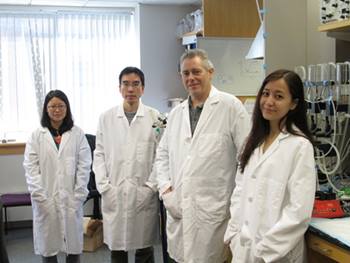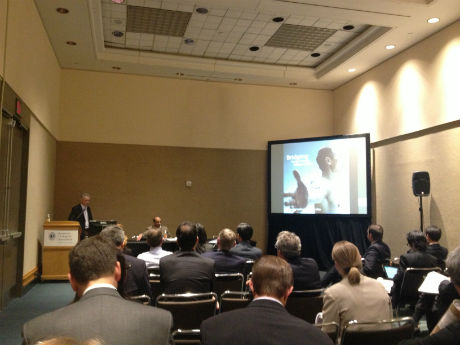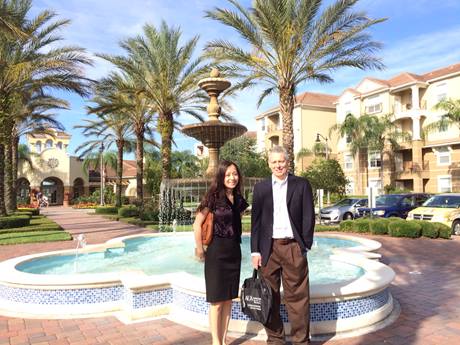Laboratory of Voiding Dysfunction
Researching Bladder Conditions and Diabetes Complications

The research conducted by our lab is aimed at elucidating the molecular basis for diseases of voiding dysfunction. These include incontinence, overactive bladder, complications of diabetes and interstitial cystitis/painful bladder syndrome. Due to the emerging appreciation of the urothelium as an active sensory element which detects and signals to the brain and the bladder muscle wall, we are focused on several classes of protein with putative mechanosensory and mechanotransducing function. These include integrins, ectonucleotidases (NTPDs), transient receptor potential channels (TRPs) and the epithelial sodium channel.
Our lab uses a range of cutting edge techniques from conditional gene knockouts in mice, urodynamic analysis, high resolution confocal immunofluorescent laser scanning microscopy, electrophysiology, laser capture microdissection and molecular analyses of gene expression to explore the physiology of urothelial signaling in bladder.
Our laboratory has close collaborative ties to those of Mark L. Zeidel, MD and Dr. Simon C. Robson at the Beth Israel Deaconess Medical Center. Furthermore we, along with researchers from The Jackson Laboratory, Duke University Medical Center and the University of Virginia Medical Center, have founded the Center for Interdisciplinary Research in Benign Urology to elucidate the genetic basis of lower urinary tract syndrome (LUTS) with aging.
Recent Publications
- Yu W, Ackert-Bicknell C, Larigakis JD, MacIver B, Steers WD, Churchill GA, Hill WG, Zeidel ML. Spontaneous voiding by mice reveals strain-specific lower urinary tract function to be a quantitative genetic trait. American Journal of Physiology-Renal Physiology 2014 PMID:2471773
- Hill WG. Control of urinary drainage and voiding. Clinical Journal of the American Society of Nephrology2014 In press
- Kanasaki K, Yu W, von Bodungen M, Larigakis JD, Kanasaki M, Ayala de la Pena F, Kalluri R, Hill WG. (2013)Loss of β1-integrin from urothelium results in overactive bladder and incontinence in mice: a mechanosensory rather than structural phenotype. FASEB Journal May;27(5): 1950-61. PMID: 23395910 . Comment in J. Urol. and Nature. Rev. Urol
- Yu W, Sun X, Robson SC, Hill WG. (2013) Extracellular UDP enhances P2X-mediated bladder smooth muscle contractility via P2Y6 activation of PLC/IP3 pathway. FASEB Journal May;27(5): 1895-903. PMID: 23362118
- Yu W., Zeidel M.L. and Hill W.G. Cellular expression profile for interstitial cells of Cajal in bladder: a cell often misidentified as myocyte or myofibroblast. PLoS One (2012) 7(11): e48897
- Zocher F, Zeidel ML, Missner A, Sun TT, Zhou G, Liao Y, von Bodungen M, Hill WG, Meyers S, Pohl P, Mathai JC. (2012) Uroplakins do not restrict CO2 transport through the urothelium. Journal of Biological Chemistry ; 287:11011-7 doi: 10.1074/jbc.M112.339283
- Yu, W., Hill, W. G., Apodaca, G., and Zeidel, M. L. (2011) Expression and distribution of transient receptor potential (TRP) channels in bladder epithelium, Am J Physiol Renal Physiol300, F49-59.PMID: 20943764
- Yu, W., Robson, S. C., and Hill, W. G. (2011) Expression and Distribution of Ectonucleotidases in Mouse Urinary Bladder. PLoS ONE 6(4): e18704. doi:10.1371/journal.pone.0018704
- Yu, W, Hill WG. Invited Review: Defining Protein Expression in Urothelium: A problem of More than Transitional Interest.American Journal of Physiology - Renal Physiology2011 Aug 31; 301:F932-42 PMID:2188038 Download PDF


